Krishna Janmashtami- Traditions, Stories and Festivities
Krishna Janmashtami is an annual Hindu festival that celebrates the birth of Sri Krishna (the eighth avatar of Lord Vishnu). The festival typically takes place in August or September. It falls on the eighth day of the dark fortnight (Krishna Paksha).
This festival is important in the Vaishnavism tradition of Hinduism. People break their day-long fast at midnight. They read and recite religious texts, dance, and enact the pastimes of Lord Krishna.
Significance of Janmashtami
Birth Of Sri Krishna
Kamsa was a tyrannical ruler of Mathura. He had married his sister Devaki to Vasudeva. He volunteered to drive the chariot to escort her sister and her husband when a prophecy echoed from heaven, stating that Devaki’s eighth son would cause his death.
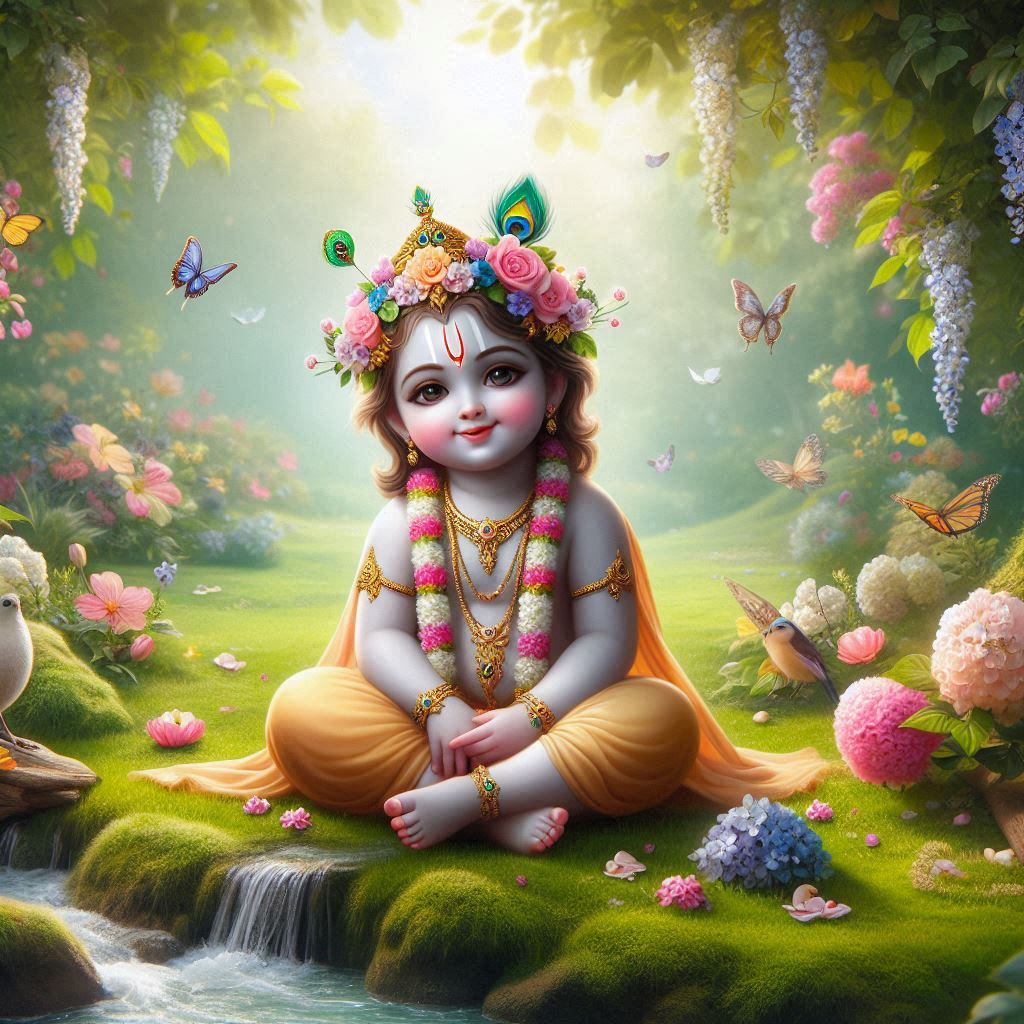
Horrified and enraged by the prophecy, Kamsa confined Devaki and her husband in prison. One by one, Kamsa killed Devaki’s six children. Divine intervention transferred her seventh child to the womb of Rohini, who was Vasudeva’s other wife. The child was Balram.
When the eighth child was born, Divine intervened, and a series of miraculous events unfolded. The prison guards fell asleep, Vasudeva’s chains broke, and the prison gates opened. Vasudeva carried the newborn to Gokul by crossing the Yamuna River. He exchanged the baby with Yogmaya, who was born to Nand and Yashoda. When Kamsa tried to kill the baby girl, she slipped from his hand and took her divine form, warning him that his slayer is alive. Kamsa lived in fear from that day that the prophecy would eventually be true someday. Sri Krishna killed Kamsa.
Lord Krishna’s birth is celebrated with great pomp and show as Krishna Janamasthmi.
Spiritual Meaning
The festival signifies the awakening of the divine within us. Sri Krishna’s birth symbolizes that the light of wisdom dispels the darkness of ignorance. Fasting purifies the mind and body. Janamasthmi is the eternal promise of Sri Krishna that whenever evil prevails and righteousness declines, he will manifest on earth to restore the balance.
Rituals and Traditions
Fasting (Vrat)
Devotees observe Nirjala fast (without fast) or Phalahar fast (fruits and milk) throughout the day. They break their fast after the Krishna Janma Puja at midnight. Fasting purifies the mind and strengthens self-discipline.
Midnight Puja and Aarti
Devotees bathe the idol of Baby Krishna with curd, milk, honey, ghee, and water. The idol is dressed in new clothes and adorned with flowers. Baby Krishna is placed on a beautifully decorated cradle. Aarti is recited with bells and conch shells, celebrating the birth of Sri Krishna.
Bhajans and Kirtans
People do Bhajan and Kirtan throughout the day. They also perform Raas Leela, that are dramatic enactment of the episodes of Sri Krishna’s life.
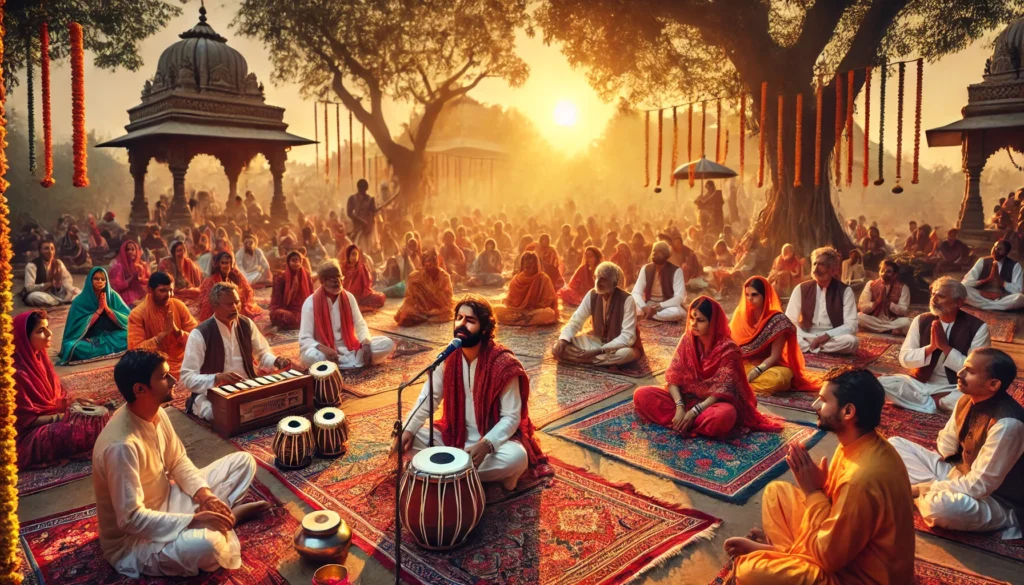
Dahi Handi
Inspired by Krishna’s love of butter, people in Maharashtra perform the Dahi Handi ritual in which teams of young men (Govindas) form human pyramids and break the pot full of curd/butter hung high above the ground.
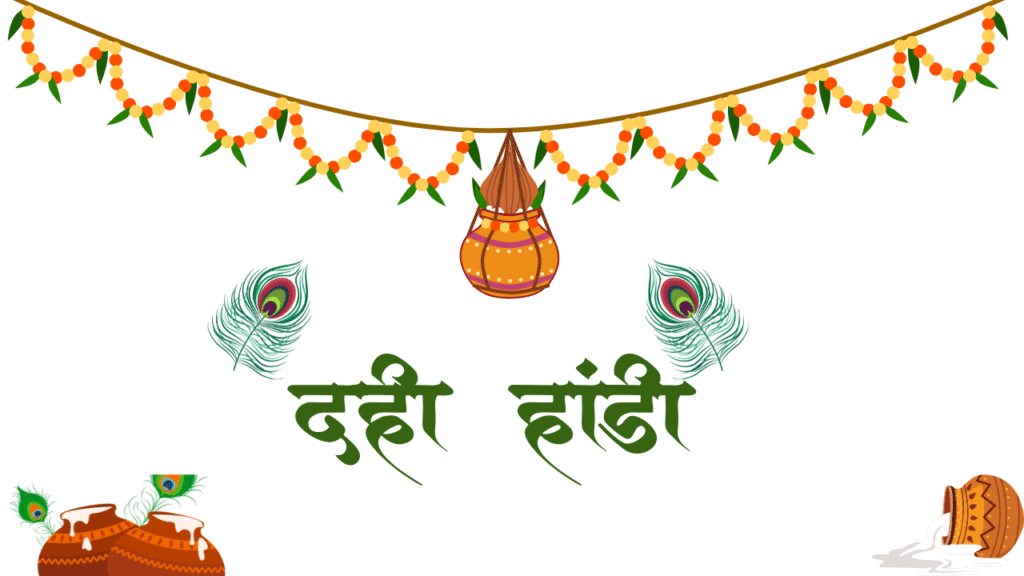
Temple Decorations and Jhankis
People decorate temples and homes with flowers, rangoli, and lights. Jhankis are displayed at various places that depict instances from the life of Sri Krishna.
Offering Bhog
Special bhog is prepared, which includes makhan mishri (butter and sugar), panchamrit, milk-based sweets, and fruits. After pooja, Bhog is distributed among devotees.
Celebrations across India
North India
The festival is celebrated with great pomp and show across the Braj region in northern India. Temples are decorated. Various bhakti events like kirtan and bhajan are performed. Ras Leela is the essence of this celebration. To celebrate Lord Krishna’s pastimes, people perform various drama events, dances, and songs across the region.

Jammu
Janamasthmi is known as Thogre or Thakure da Vrat in this area. Devotees observe Phalaahar Vrat. It marks the beginning of kite-flying season in this region. People from the Dogra community donate cereals and grains in the name of their ancestors. Worship of the Jand tree, considered holy, takes place on this day.
Kashmir
Kashmiri Pandits celebrate it as Zaram Satam. Devotees observe a fast all day and visit the Krishna temple at night. They perform Puja, do abhishek of the murti of Sri Krishna, and sing bhajans.
Maharashtra
Janamashtmi is celebrated as Dahi Handi. As Sri Krishna used to steal butter in the same way, young men break the dahi handi. They form a human pyramid and break the handi that hangs at a height from the ground. The pot is filled with buttermilk, curd, and milk.
Gujarat and Rajasthan
Sri Krishna established his kingdom in Dwarka, Gujarat. Here, people celebrate Janmashtami by breaking dahi handi, performing garba, and participating in raas leela. In Kutch, people decorate their bullock carts and take out processions with singing and dancing. People visit temples like Dwarkadish and Nathdwara.
South India
In Tamil Nadu, people decorate homes with kolams. Devotional songs are played. The footsteps of baby Krishna are drawn till the pooja (prayer) room in the house. People recite the Bhagavat Gita. Milk-based items are offered to Sri Krishna. Most people observe a strict fast on this day.
In Andhra Pradesh and Telangana, recitation of devotional songs and shlokas takes place. Young boys dress up as Sri Krishna and visit the neighbourhood. People offer various kinds of sweets to Lord Krishna. The number of temples dedicated to Lord Krishna in this region is few. People worship Sri Krishna through paintings.
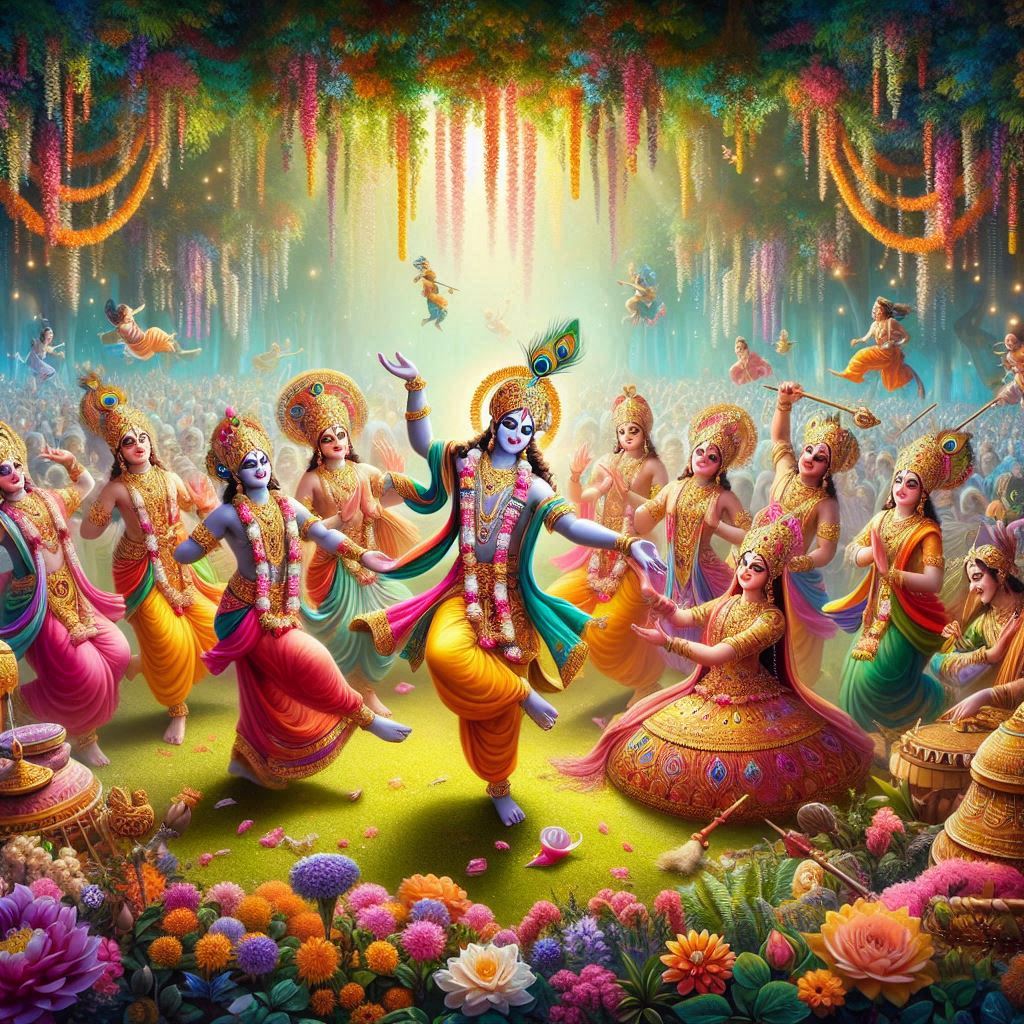
Eastern States
Sankardeva and Sri Chaitanya Mahaprabhu are credited with the efforts of spreading Sri Krishna’s teachings in this region. Borgeet, Ankia Naat, and Sattriya are popular in West Bengal and Assam. In Manipur, people do Raas Leela in the Manipuri style. People dress up their children as Gopi and Sri Krishna. People recite and listen to the Bhagavata Gita and Bhagavata Purana.
Odisha and West Bengal
The festival is known as Sri Krishna Jayanti or Sri Jayanti in Puri and West Bengal. The next day is called Nanda Ucchhaba dedicated to Sri Krishna’s foster parents, Nanda and Yasodha. Devotees fast and bring water to perform the abhishek of Radha Madha.
Puja Vidhi
- Clean the home and Puja area.
- Place a clean cloth over the altar and place the pictures of Radha Krishna and other deities.
- Fill a copper/brass pot with water, place mango leaves around its opening, and cover it with a coconut.
- Prepare a small cradle/Jhula for Sri Krishna’s idol.
- Decorate and put some cushions for the deity.
- Devotees do fasting, some do Nirjala vrat (without water), and some do phalahar (take only fruits).
- At midnight, bathe the idol of Sri Krishna with water.
- Perform Abhishekh using panchamrit -> a mix of curd, milk, honey, ghee, and sugar.
- Wipe the idol and dress the idol in new clothes and jewelry.
- Prepare Bhog that includes -> panchamrit, fruits, dry fruits, kheer, pedas.
- Offer Tulsi leaves to Sri Krishna with bhog.
- At Nishita kal (midnight), place the idol on the jhula and swing it gently.
- Perform aarti with bhajan and kirtans.
- Recite verses from the Gita and chant Hare Rama, Hare Krishna.
- Distribute the bhog Prasad to family, friends, and neighbours.

Dishes that can be prepared
- Makhan Misri
- Panchamrit
- Kheer (Rice Pudding)
- Pedas
- Sabudana Khichadi
- Dry Fruit Laddoo
- Makhana (Fox nuts) Kheer
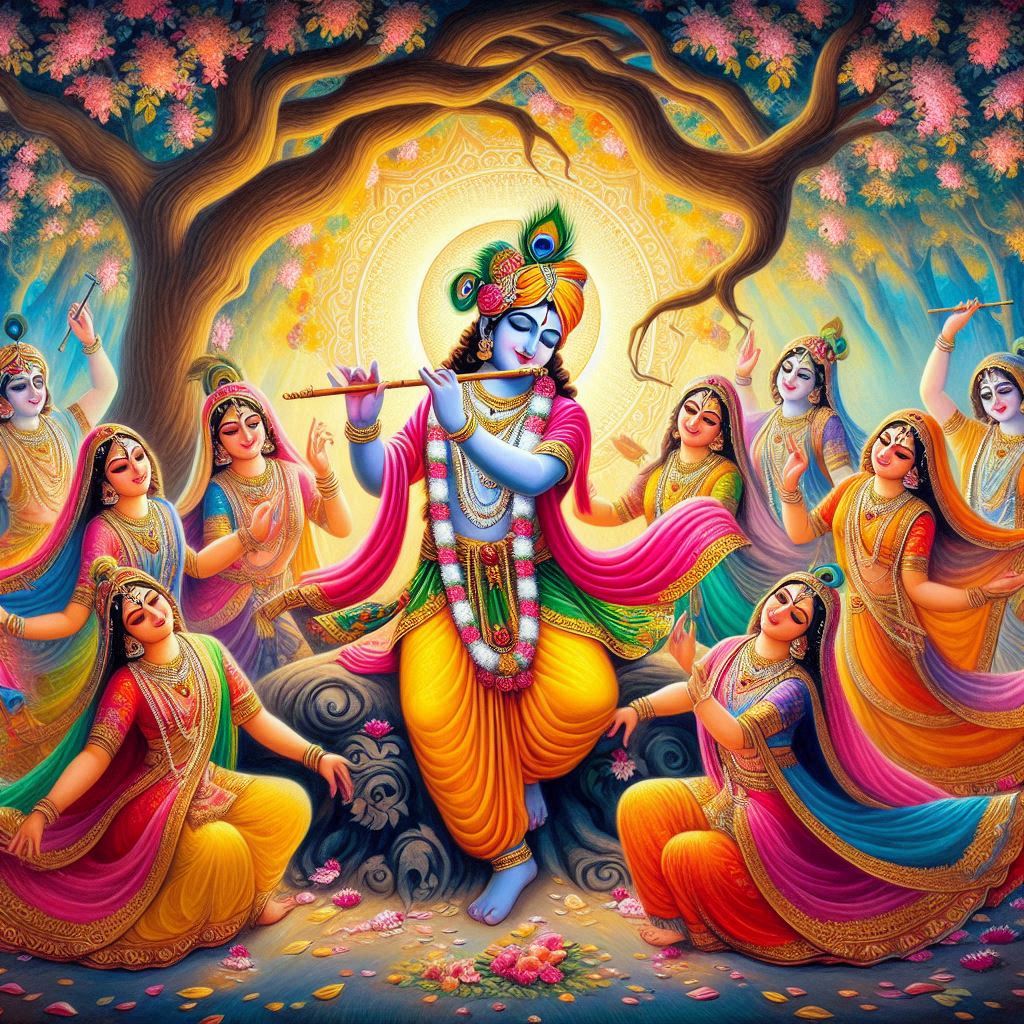
Janamashtmi celebrates faith, love, and righteousness. From the enchanting stories of Krishna’s childhood to his profound teachings in the Bhagavad Gita, every aspect of this day inspires us to lead a life filled with devotion, compassion, and truth. Let’s open our hearts to Krishna’s wisdom and invite joy, peace, and positivity into our lives. May Lord Krishna’s blessings guide us always.
One can read more about Lord Krishna’s pastimes in the following books:


